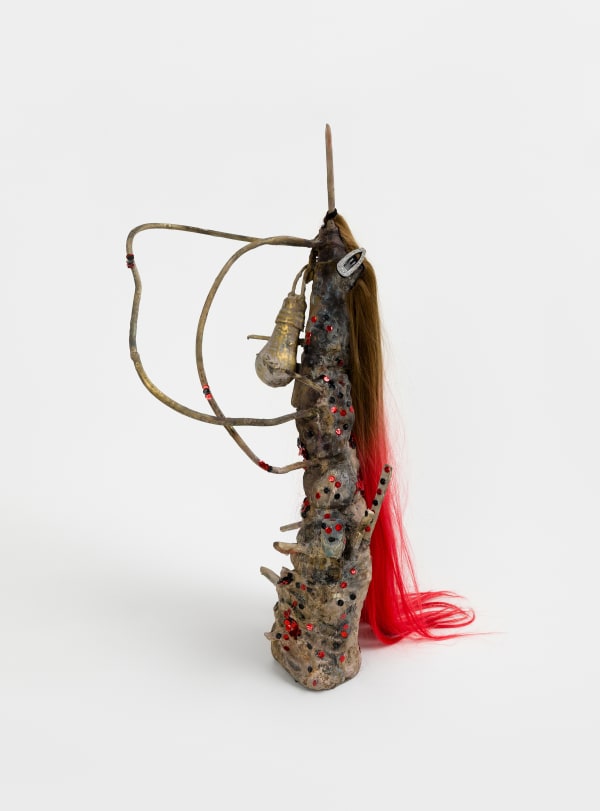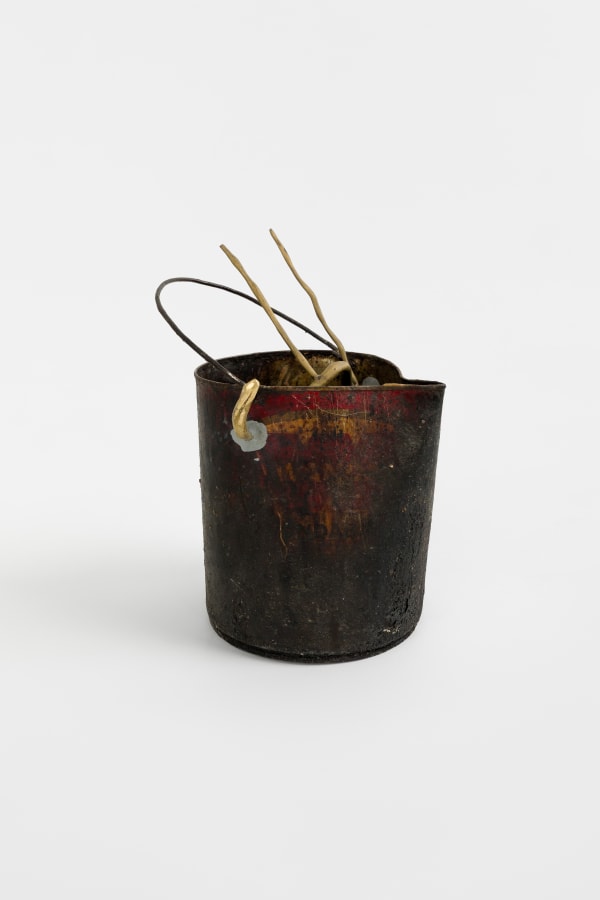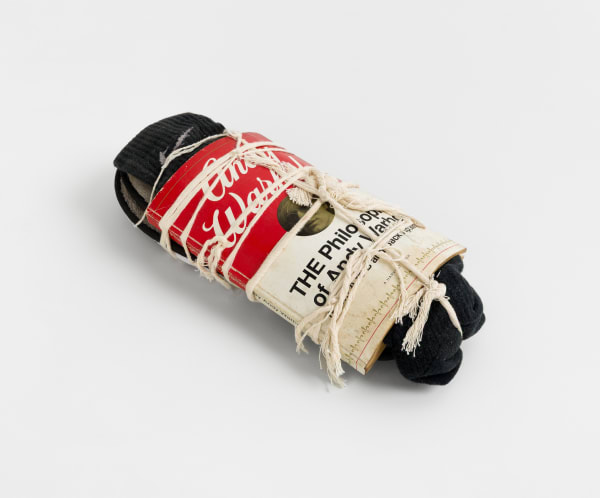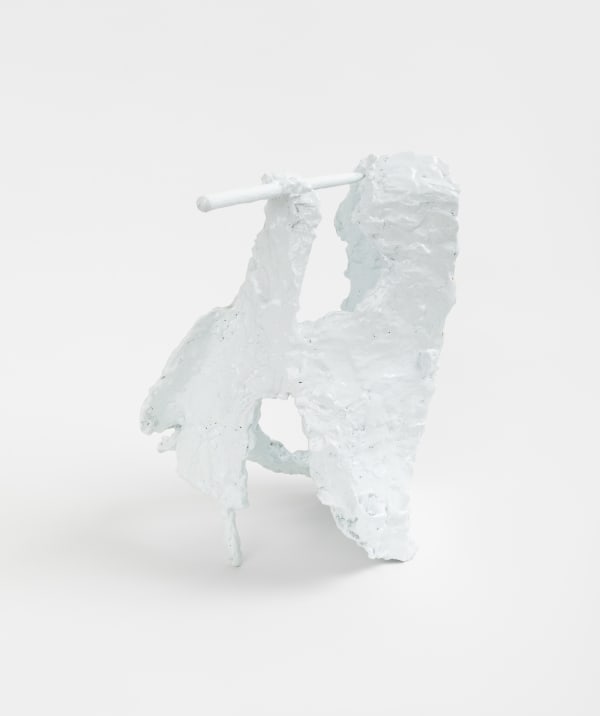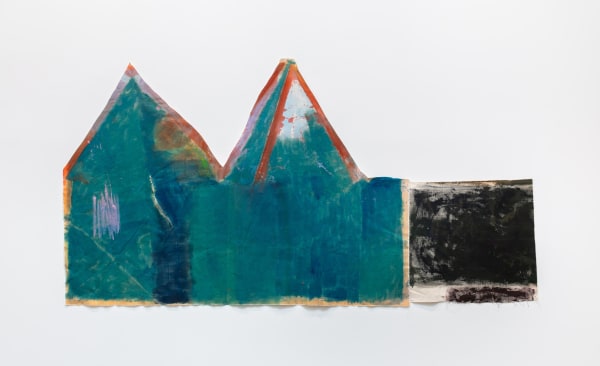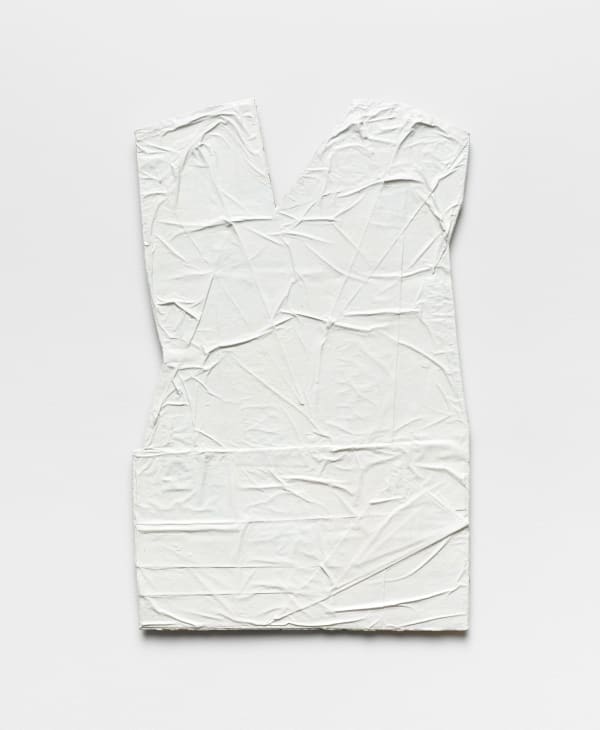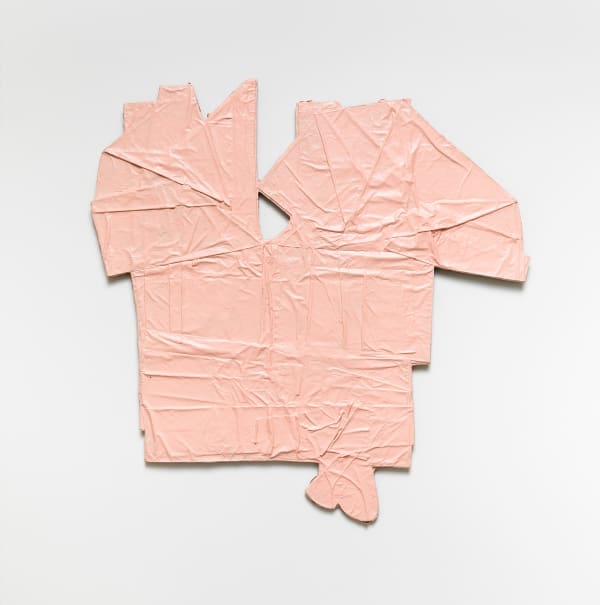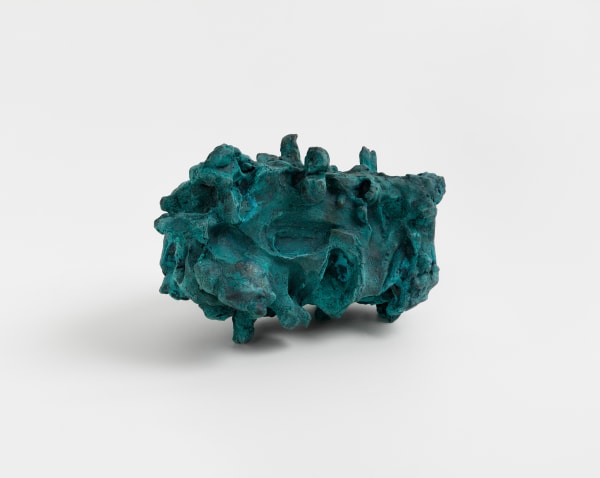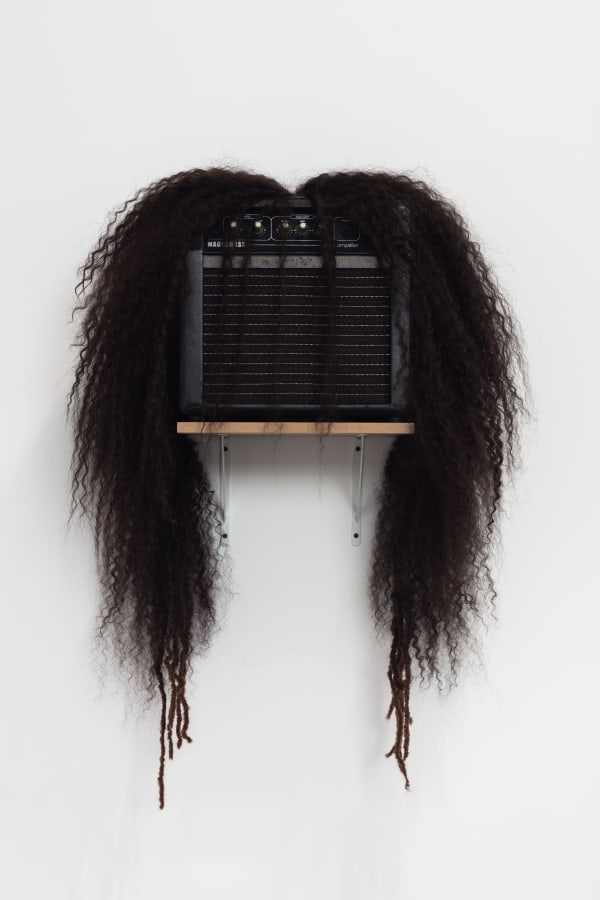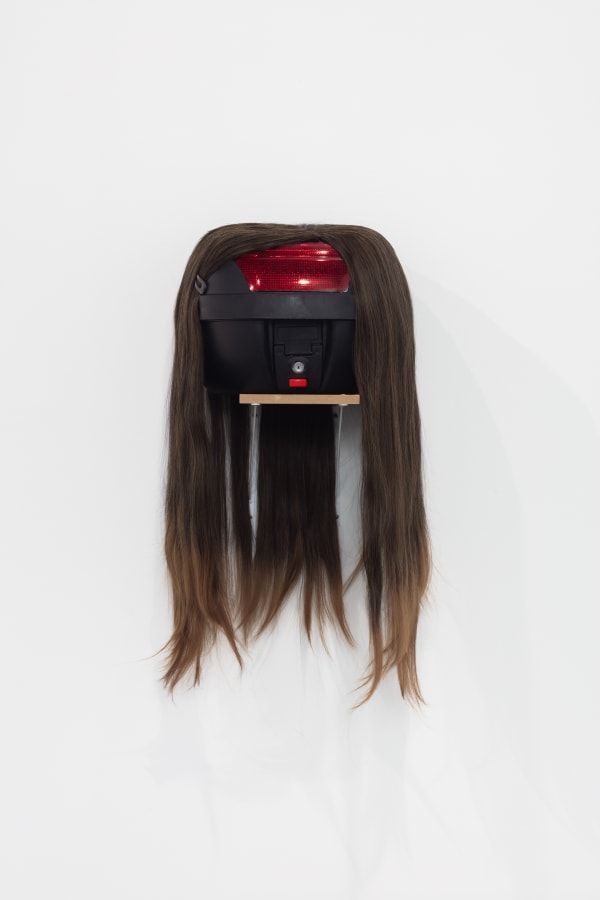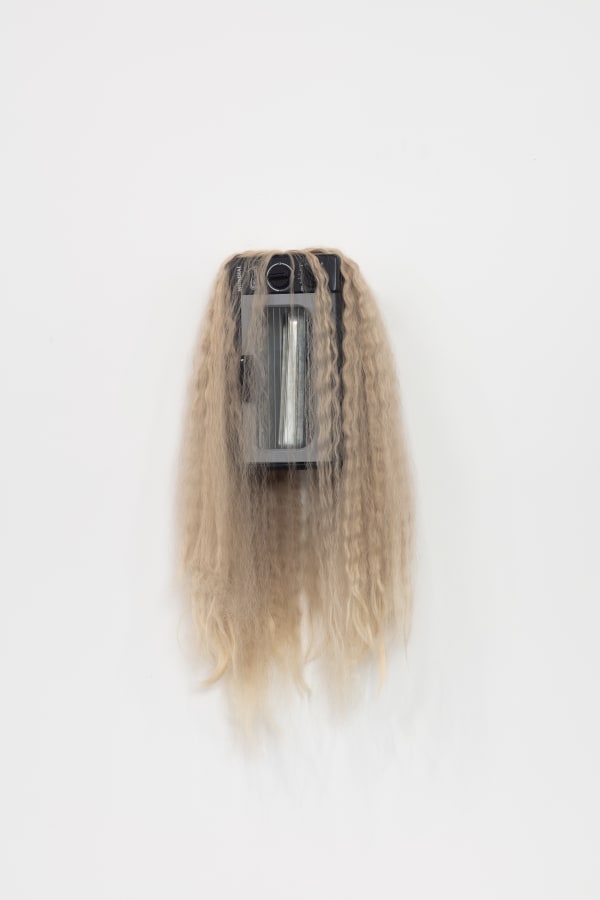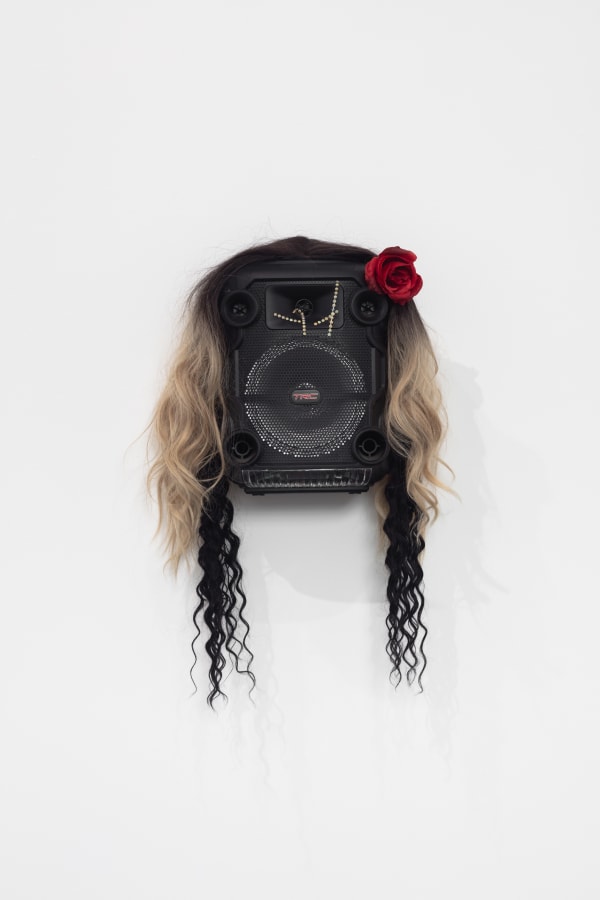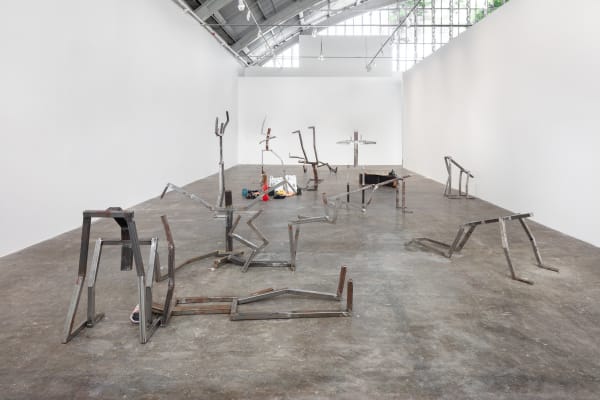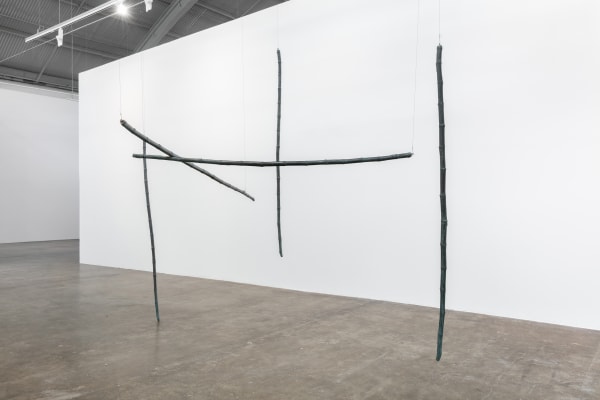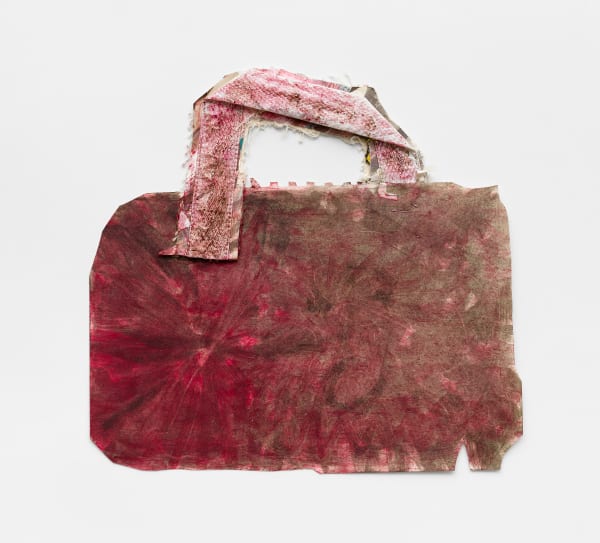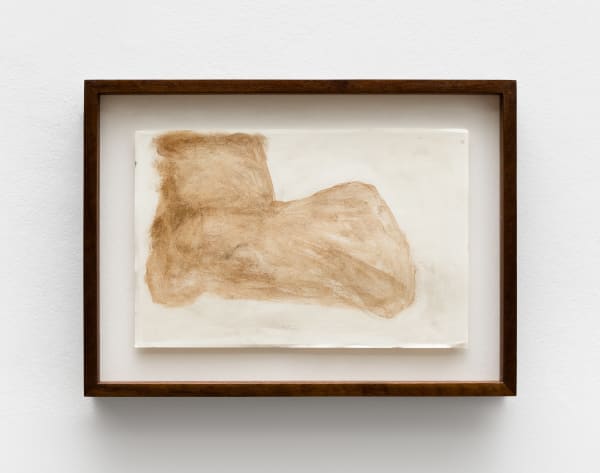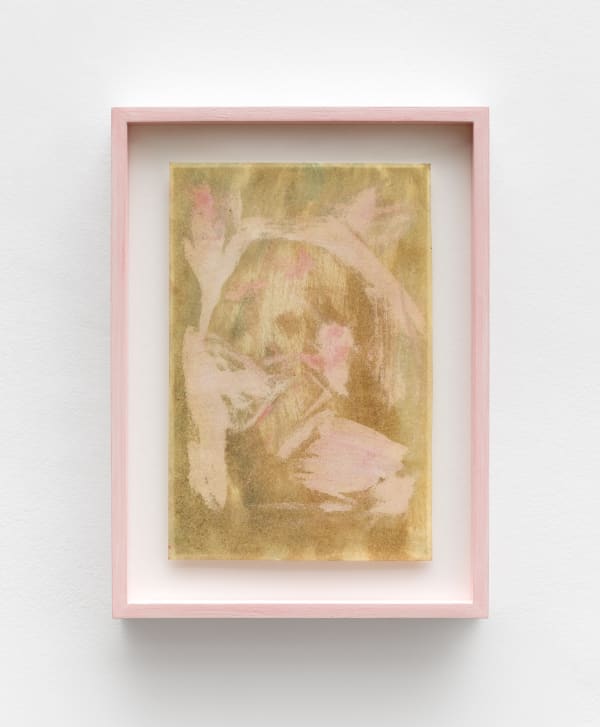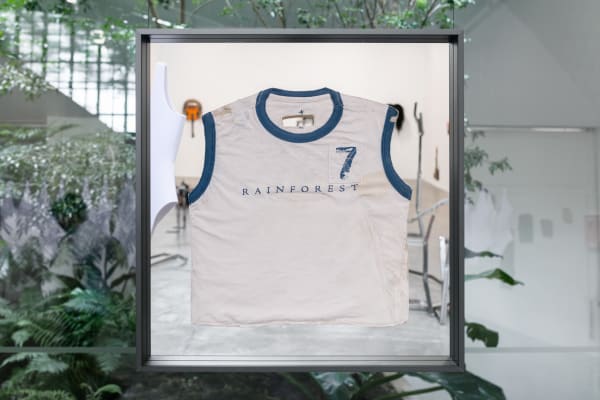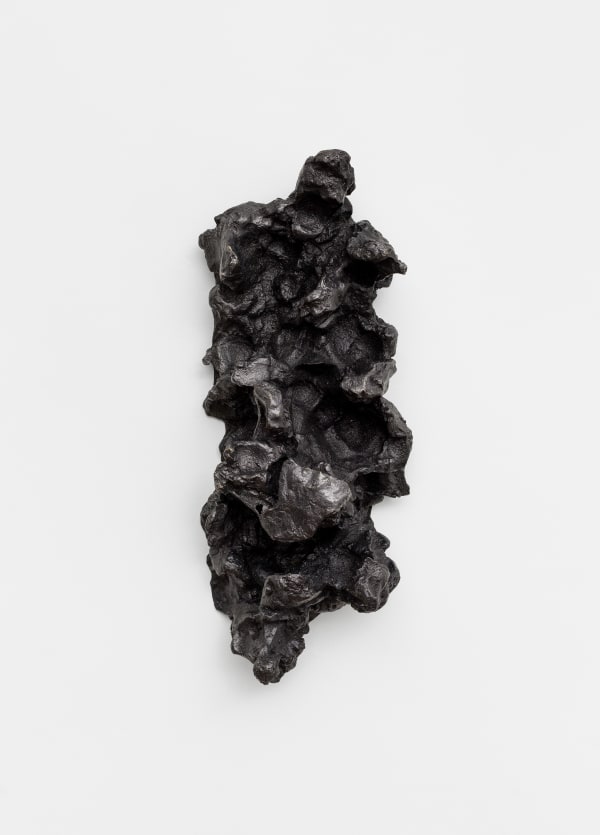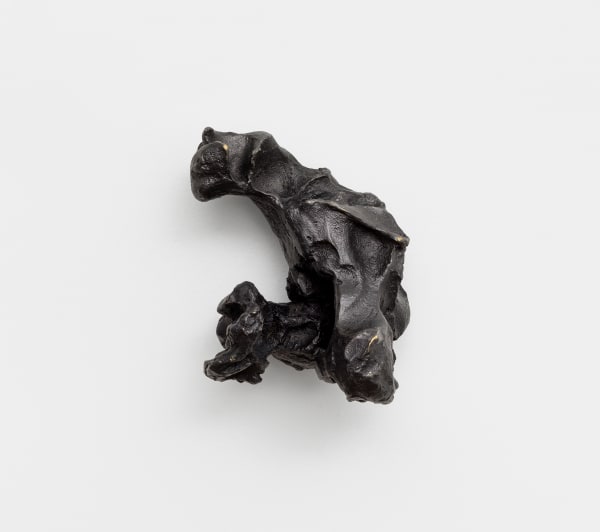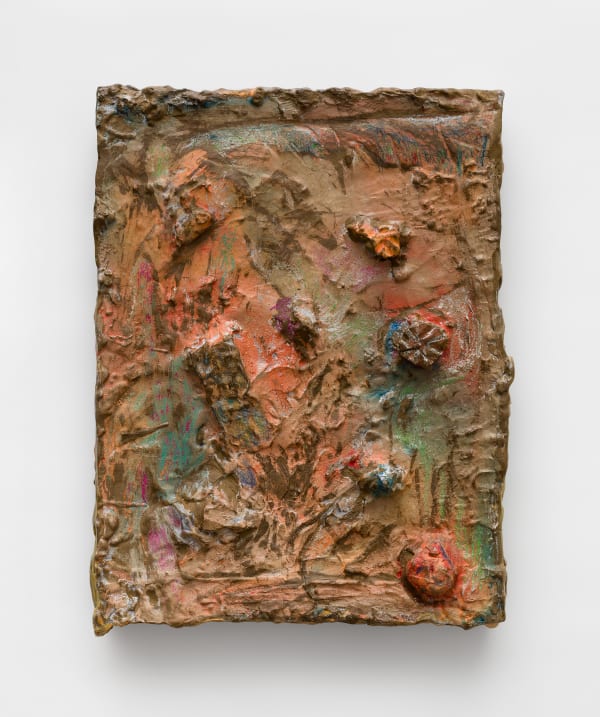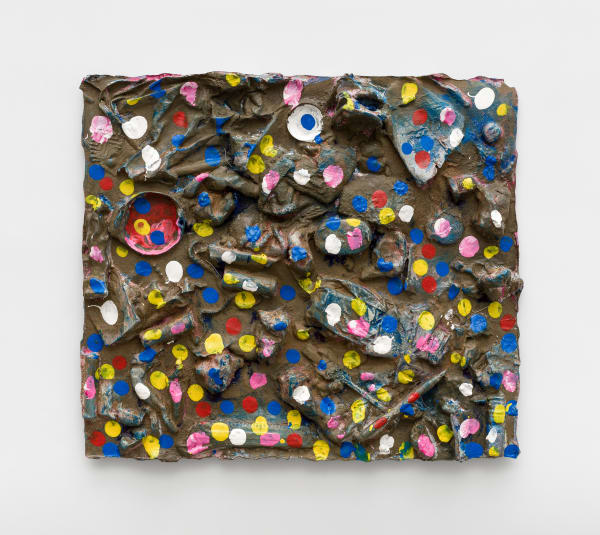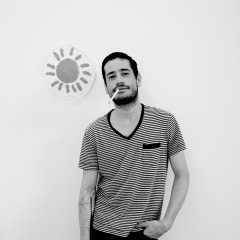1 metro de cabelo Adriano Costa
About 1 metro de cabelo
He kissed me on the mouth and told me
Life is as hollow as the hat of a headless baby
And I laughed like hell
And he was like a drunken foxhole
And I said, enough of your talk
Of this bottomless pit
I know that the world
Is a stream without a bed and it's only in the hollow of its chest
That a river flows
– Caetano Veloso, 1982
In times of so much repetition, reproducibility, and disposability, there are few Brazilian artists who manage to build a trajectory that runs counter to the immediate demands of the market or more fashionable social issues. Adriano Costa (São Paulo, 1975) is one of them, precisely because of his rare appreciation for not particularizing the art debate around the immediacy of certain themes and histories. His politicization (of an aesthetic nature, by the way) is more subtle and appears when the works are shown together in the exhibition space, in the suggestion of their titles, and in the images that emerge from each exhibition.
On the one hand, it is possible to anchor his production in the experimental and ecological verve of Hélio Oiticica and the irony and radical use of materials of the Geração 80, from Paulo Monteiro to Leda Catunda. It could be said that his production is rooted in this tradition. On the other hand, there is a strong dialogue with the international productions in vogue, such as some of the practices of the German Isa Genzken and the US artist Paul Thek, among others. These indirect links can be said to come from his constant contact with current production, a kind of perspective of presence in the face of what has been conceived in the creative universe of contemporary art.
As is well known, Adriano has gradually asserted his production in an international context: he follows an institutional circuit, often in residency programs or group exhibitions dealing with historical themes and processes, in addition to participating in the private circuit of galleries and independent spaces. Although he usually organizes the exhibition with distinct and independent works, the intercommunication that is established on site between the works and the space gives his production an amplified meaning. He never loses sight of this. In a way, it can be reductive to think of his works only as autonomous devices, detached from an exhibition context. However, it is part of his work to understand how each of the elements distributed in a given architectural space can generate a better dialogical relationship with the public.
From a public education at the School of Communication and Arts of the University of São Paulo, to working in a broader global context, without necessarily representing the label of Brazilian or Latin American artist, he remains steadfast in his intuitive purpose to bring the outside world into the inner universe of his art. In this purpose, we can also include a look at the reverberations of someone who has lived the cultural nightlife of São Paulo. And this is one of the possible themes of 1 metro de cabelo [1 Meter of Hair].
On Poetic Cohesion
In an amplified way, his artistic practice refuses the construction of certain patterns or lines of formal coherence. On the contrary, in his daily compositional exercises there is a desire to build something that resonates in his present, even if the trigger for the work is the memory of some reference from his intimate or urban life: be it an allusion to issues of a behavioral culture or a musical, cinematic or television culture. It is also difficult to associate it with a specific language or medium. There is a technical transience that radicalizes his working method, disobeying norms in the way he makes his objects, assemblages, ready-mades, sculptures and installations. It is the bronze that does not receive the traditional patina, it is the metal sculpture that does not undergo uniform treatment, it is the choice of the frame and its breaking of pattern, among many other breaks of pattern.
For him, the symbiotic relationship between his art and his daily life is inalienable. There is no way to perceive his artistic production in isolation from his desires, his formal and behavioral reflections, and his sea of personal references. In our perception, everything begins with the conquest of an object, a remnant, a form. These elements trigger a creative possibility. It is this that guides the transformation into a work of art. There is no fear of risk in using new materials, experimenting with approximations between them, fusing them or contrasting them with everyday objects previously selected by the artist. Everything figures and plays a leading role in the purposeful confusion of materials and objects. He is the promoter of a fearless encounter between disparate things, an action that is a tribute to Rauschenberg’s pioneering gesture, a historical reference in the combination of things and their respective materials.
It should be said that this is not a mere repetition of assemblage or combine procedures. What he is doing is something that can go further, without prior criteria. It is the activation of certain signs that seem to contain no approximation. However, when they are extracted from everyday life and arranged in new object and image forms, they take on another existence, losing the requirement of the utilitarian veracity of the original object or the object itself that he wants to refer to. As an immediate example, we can think of the domestic objects that appear in the exhibition.
In the universe of these new works, I would like to highlight the elements that are seemingly so disparate, but together take on meaning: paintings made with scraps of canvas or paper that configure corporal situations, halfway between a canvas and a collage; a shoe, probably found, then painted (resembling a landscape or not) and identified as Só entende quem; the swimsuits on a rack, almost like a parade of bodies or the suggestion of a shop. All these devices offer a dance of meanings that is up to you to establish.
In one way or another, in a collection of his works, all the things we see and eventually want to touch can make us want to approach or repel, a dichotomous movement in which, ultimately, the idea of emptiness – an existential emptiness, a material emptiness – seems to be contained and camouflaged, even with all the references we can recognize. It is almost like a metaphor for our daily lives, an experience that constantly needs to be filled with meaning. Much of what he shows us, sometimes ironically, are visual enigmas that make us think about existential questions from the most banal objects. This opens the possibility of a dialogue between each of us and the artist.
I compare this gesture of rapprochement and dialogue with a song by Caetano Veloso, released in 1982, which did not pass unscathed through the moral censorship of the Brazilian military dictatorship: Ele me deu um beijo na boca [He Kissed Me on the Mouth].[1] In this song, whose lyrics sound like a poetic account of a conversation, Caetano makes the following observation in the second verse: “Life is as hollow as the hat of a headless baby.”
It is the beginning of a philosophical and existentialist conversation with a strong sense of humor, through which we have this powerful image described, a form of analogy in which the existential and material emptiness of life is given the same weight and meaning as the condition of the “empty hat of a headless baby.” In my opinion, it is in this conundrum, a kind of poetic riddle, that Adriano also invites us to a conversation when we approach his work.
In this case, I suggest that we take a look at his bronze pieces, sculpted with his fingers, in which the presence of color masks the weight and nobility of the material itself, literally presenting us with some gaps of understanding that linger between the title of the piece and its materiality. The unfolding of meanings from this contact with the work seems to me to be an intention very close to that which Caetano encourages us with his song.
In fact, in one of these larger bronze works, titled Exato contínuo (2025), the artist takes direct inspiration from the scenic design by artist and set designer Hélio Eichbauer (1941-2018) for the play o Rei da Vela, conceived by Oswald de Andrade (1890-1954) in 1933 and staged by José Celso Martinez Corrêa’s Teatro Oficina (1937-2023) in 1967. There is a clear intention on Adriano’s part to bring to the present a reading that is based on this idea of Brazil as an unfinished project of modernity, a continuous flow that always tends towards a new beginning and remains unfinished. And this was, in a way, one of the reasons why Veloso put such a scenario on the cover of his album “Estrangeiro” (1989), which ended his poetic journey in the 1980s, commenting, even in the first song of the album, on this cyclical and continuous movement that represents us culturally. Perhaps this is what the artist wants to tell us. In the same way that the military kept an eye on the moral literalness of a kiss between two men, we should not get hung up on the literal and visual condition of the work itself.
Much more than 1 meter of hair
On 1 metro de cabelo, his exhibition of new works at the gallery, he once again emphasizes his desire to place each work in relation, creating a space-time structure that can only be experienced in the context created within the exhibition environment. In addition, there is a direct reference to the expression “bater cabelo,” a type of headbanging present in LGBTQIA+ culture. In social environments for people who are still marginalized, there is indeed a corporal gesture that in many cases can be a hair battle between people in the same social circle, demonstrating empowerment and presence. It is certainly an index of body language that lives up to the expression itself.
It is even possible to treat these gestures as a dance battle, almost as a symbolic fight, involving movements and friction between the body and the space around it. In a broader sense, it is also a practice that unites a socially excluded community in which its characters seek shelter in a context of behavioral and linguistic affinity. Through these and other practices, a sensory and expressive game is made explicit by those who assert themselves through a construction of visibility.
The artist also references the dance demonstrations and struggles of the 1970s and 1980s known as whacking and voguing. These practices were born in large North American urban centers, often as forms of resistance and struggle by their respective LGBTQIA+ communities. Today, these activities are recognized around the world, a culture that can be found in the streets and streams, represented in reality shows and in the many nightclubs of a city like São Paulo. In fact, the conflict between two bodies in a quasi-fight can generate a certain level of violence, which is also present in other dance and/or sport practices, such as capoeira.
It can be said that, over time, there has been a process that has led to a softening of dance, almost to a tragicomic representation for a wider audience, which ultimately leads to these performances being seen as pure entertainment, divorced from their artistic expression, which is also political. Knowing this, as someone who lived and participated in the nightlife of São Paulo, especially in the 2000s, Adriano Costa uses some of the references of the nightlife culture of those years in his artistic strategies. And through his artistic production, he indirectly refers to the movements that emerged from these practices. I do not know if we can speak of homage, but in my opinion, there is a certain respect for the socio-cultural struggle of those who experienced the night and transformed partying into political life.
It is not a matter of constructing a childish representation of social and artistic movements as complex as those mentioned above, but of bringing into his art visual and compositional structures that stem from his sensitive view of these practices. To further his interest, he proposes a series of metal sculptures built from the ergonomic measurements of his own body. All are structured around seductive dance movements, postures, and possible relationships with others. Perhaps an unprecedented aspect of his new production is his desire to make his own corporal and human condition explicit and the protagonist.
Despite this poetic path, which emphasizes the encounter with the other, there are also some references in his new works to domesticity, to the ordinary objects of everyday life. A pair of shoes, loudspeakers, an object reminiscent of a microwave oven. In fact, the bronze pieces present a visual conundrum, like what Claes Oldenburg gave us with his art. The shapes formed by his own fingers, which leave grooves in the material, and the presence of color (impregnated with acrylic paint) suggest a malleability and lightness to the pieces that they do not actually possess. Many of them are even arranged on the wall, creating a space of doubt. The apparent delicateness is disrupted when approached and, finally, when touched.
It is believed that the proposed sculptural path is the result of all these references that are more or less emphasized. Together they form a background for his current production, from the private to the public. In general, it is important to reiterate that majority of objects made in bronze have been formed using the expressive power of the fingers, which becomes central. These new approaches and sculptural evolutions are not unaffected by the subtle treatment of humor that he brings, as opposed to the more idealistic gestures that we see in art today. As Caetano would say, Adriano Costa’s poetic universe is like “a stream without a bed, and it is only in the hollow of its chest that a river flows.”
– Diego Matos
––––––––––––––––––––––––––––––––––––
[1] This song, released as the first track on Caetano Veloso’s album Cores e Nomes (1982), is one of my earliest memories of the indirect contact I had with Adriano Costa. It was 2004 and he was playing on Thursdays in a landmark place in São Paulo known as the Torre. I remember that in those years, electro and indie rock, flirting with electronica, were at the forefront of music. However, in the middle of the night, he played this song by Caetano, which caused a kind of noise, maybe a disturbance, on the dance floor. I and a few other friends smiled at the discrepancy and the audacity. It is this noisy audacity that permeates his work.
-
 Adriano Costa, TV Mulher, 2025
Adriano Costa, TV Mulher, 2025 -
 Adriano Costa, Erê, 2025
Adriano Costa, Erê, 2025 -
 Adriano Costa, Untitled | Sem título, 2025
Adriano Costa, Untitled | Sem título, 2025 -
 Adriano Costa, Cão | Cadela, 2024
Adriano Costa, Cão | Cadela, 2024 -
 Adriano Costa, Terra Trema, 2024
Adriano Costa, Terra Trema, 2024 -
 Adriano Costa, Warhols, 2023
Adriano Costa, Warhols, 2023 -
 Adriano Costa, Avnt (Garde), 2023
Adriano Costa, Avnt (Garde), 2023 -
 Adriano Costa, O Flautista, 2025
Adriano Costa, O Flautista, 2025 -
 Adriano Costa, Esbórnia, 2025
Adriano Costa, Esbórnia, 2025 -
 Adriano Costa, Barroco Zona Leste, 2025
Adriano Costa, Barroco Zona Leste, 2025 -
 Adriano Costa, Biscoito, 2025
Adriano Costa, Biscoito, 2025 -
 Adriano Costa, Gato, 2025
Adriano Costa, Gato, 2025 -
 Adriano Costa, Cor, 2025
Adriano Costa, Cor, 2025 -
 Adriano Costa, Moletom, 2025
Adriano Costa, Moletom, 2025 -
 Adriano Costa, Rose, 2025
Adriano Costa, Rose, 2025 -
 Adriano Costa, Granada, 2025
Adriano Costa, Granada, 2025 -
 Adriano Costa, Garrincha, 2025
Adriano Costa, Garrincha, 2025 -
 Adriano Costa, Sandra (Arujá mototáxi), 2025
Adriano Costa, Sandra (Arujá mototáxi), 2025 -
 Adriano Costa, Cindy Wilson, 2025
Adriano Costa, Cindy Wilson, 2025 -
 Adriano Costa, Valdir Mulher, 2025
Adriano Costa, Valdir Mulher, 2025 -
 Adriano Costa, E desejo me corresponder com o rapaz que seja o tal, 2025
Adriano Costa, E desejo me corresponder com o rapaz que seja o tal, 2025 -
 Adriano Costa, Burn, burning in flames, higher and higher, 2025
Adriano Costa, Burn, burning in flames, higher and higher, 2025 -
 Adriano Costa, Be sweet - comment te dire adieu, 2025
Adriano Costa, Be sweet - comment te dire adieu, 2025 -
 Adriano Costa, Bolsinha, 2024
Adriano Costa, Bolsinha, 2024 -
 Adriano Costa, Melissa, 2024
Adriano Costa, Melissa, 2024 -
 Adriano Costa, Amigo roendo as unhas, 2024
Adriano Costa, Amigo roendo as unhas, 2024 -
 Adriano Costa, Moda chata de consertar tudo, 2024
Adriano Costa, Moda chata de consertar tudo, 2024 -
 Adriano Costa, Espelho, 2024
Adriano Costa, Espelho, 2024 -
 Adriano Costa, Chinesa, 2024
Adriano Costa, Chinesa, 2024 -
 Adriano Costa, f1, 2024
Adriano Costa, f1, 2024 -
 Adriano Costa, f4, 2024
Adriano Costa, f4, 2024 -
 Adriano Costa, Aurora fluminense, 2024
Adriano Costa, Aurora fluminense, 2024 -
 Adriano Costa, Geiger Counter, 2024
Adriano Costa, Geiger Counter, 2024 -
 Adriano Costa, Sertão, 2025
Adriano Costa, Sertão, 2025 -
 Adriano Costa, quarta-feira, 2025
Adriano Costa, quarta-feira, 2025 -
 Adriano Costa, Àgora , 2025
Adriano Costa, Àgora , 2025 -
 Adriano Costa, Nunca não existe, 2025
Adriano Costa, Nunca não existe, 2025

